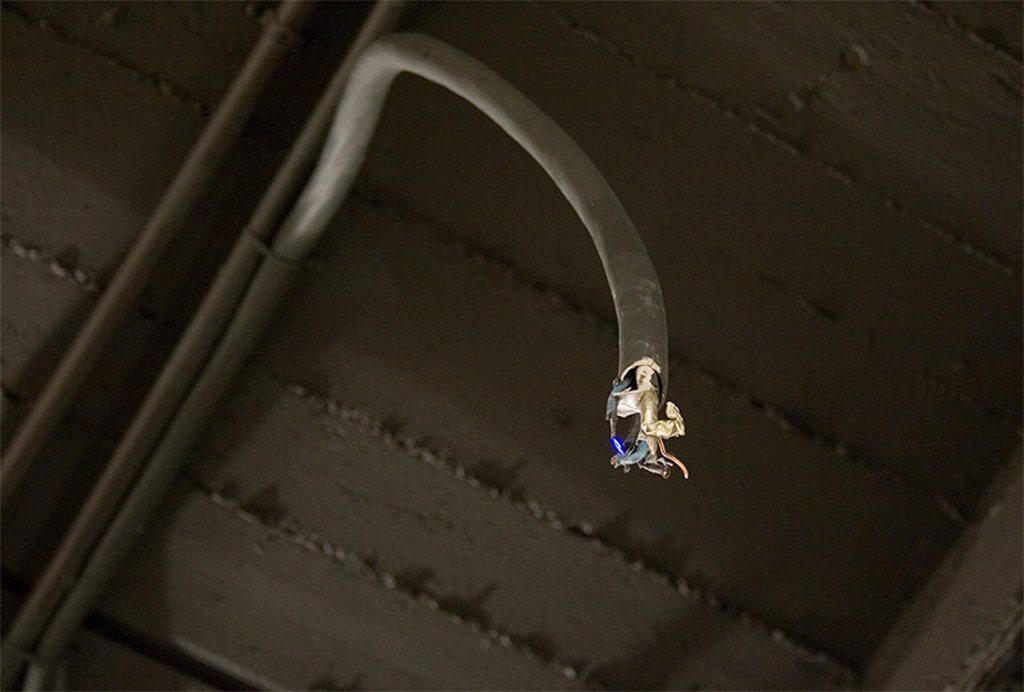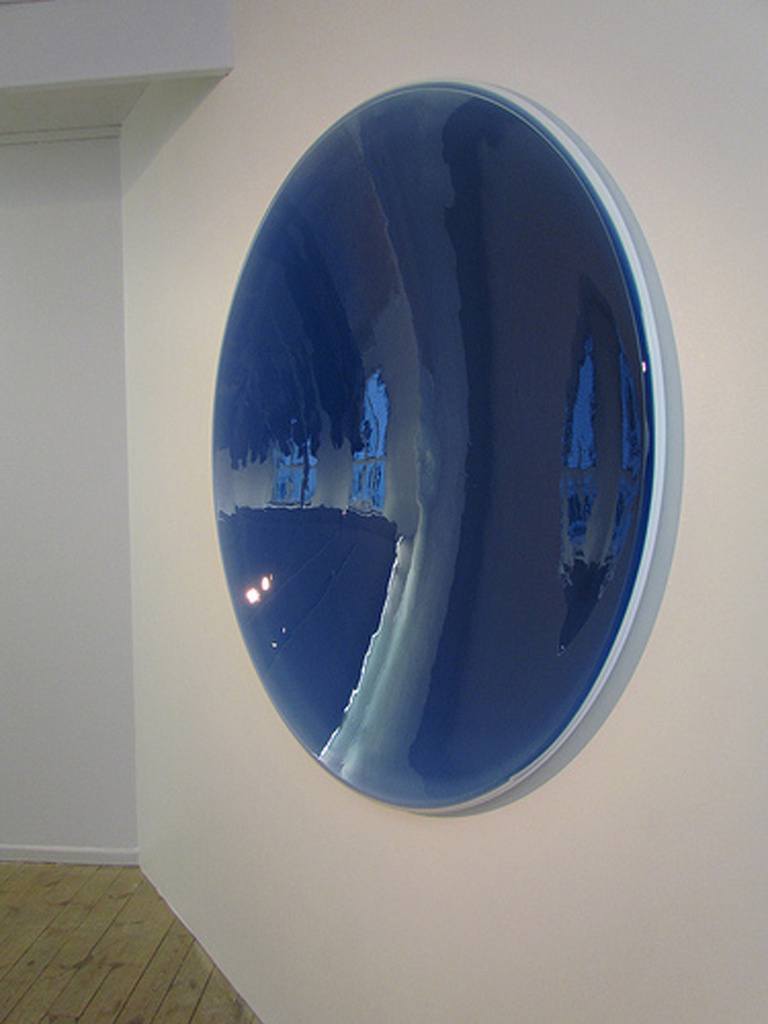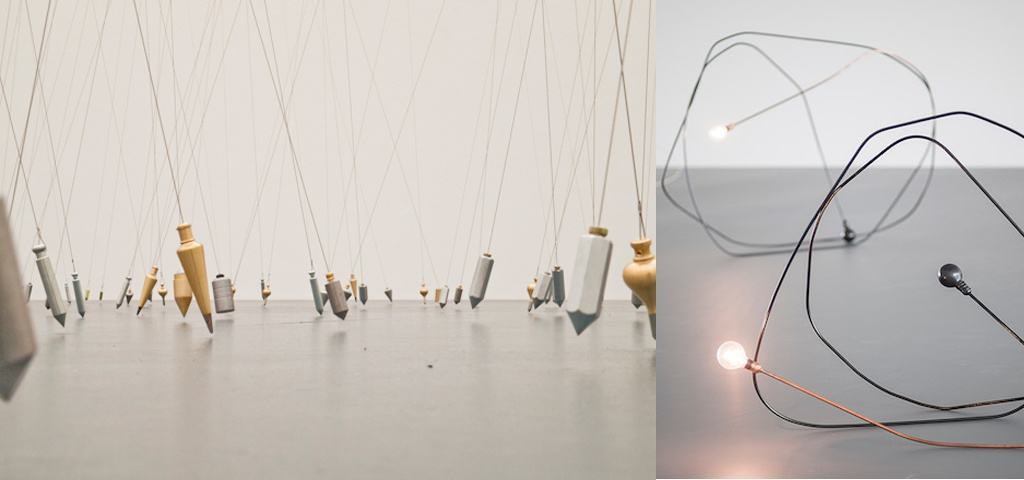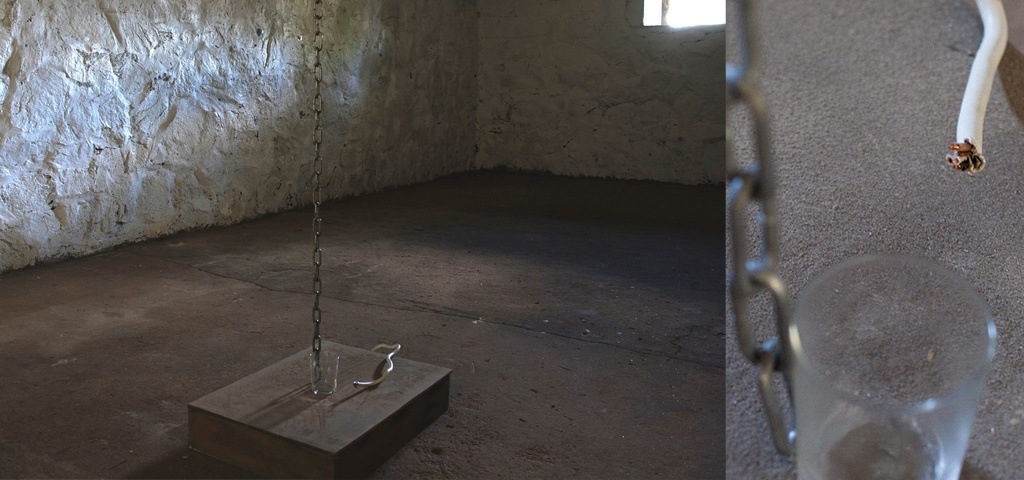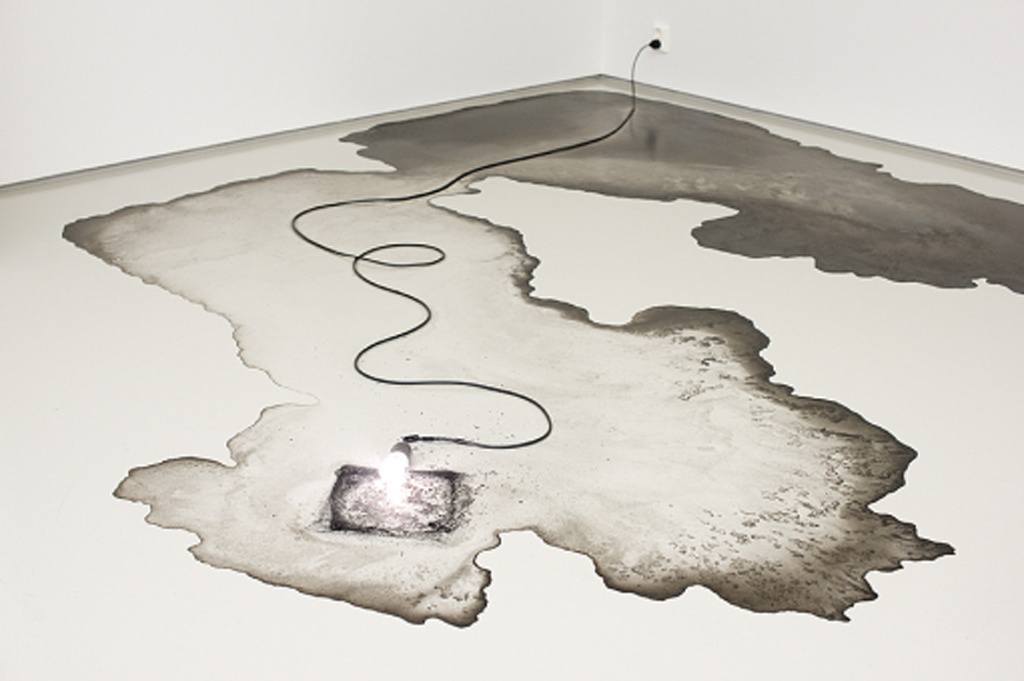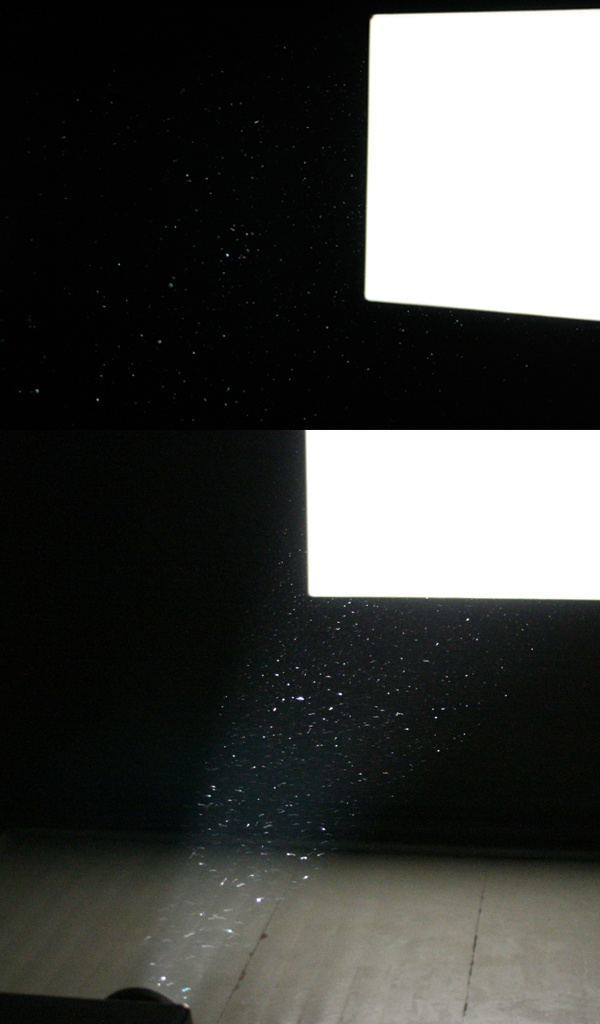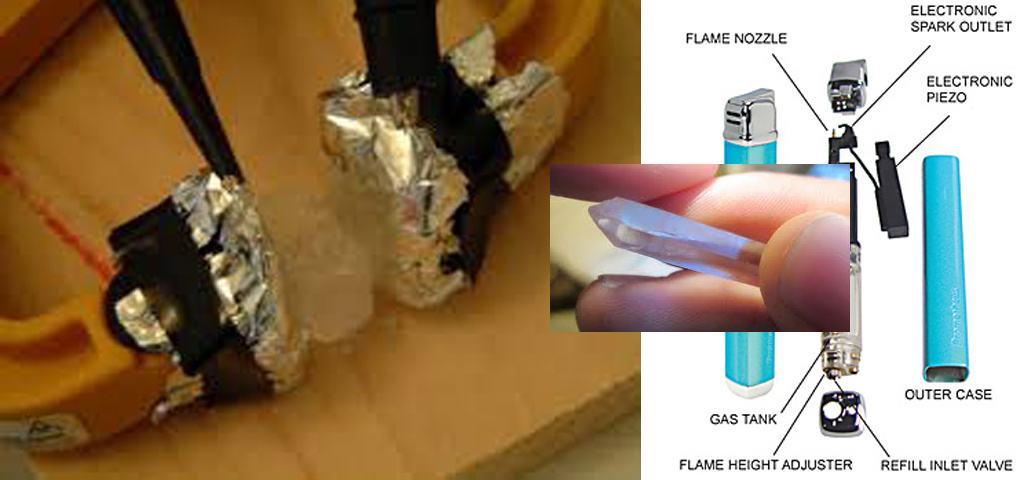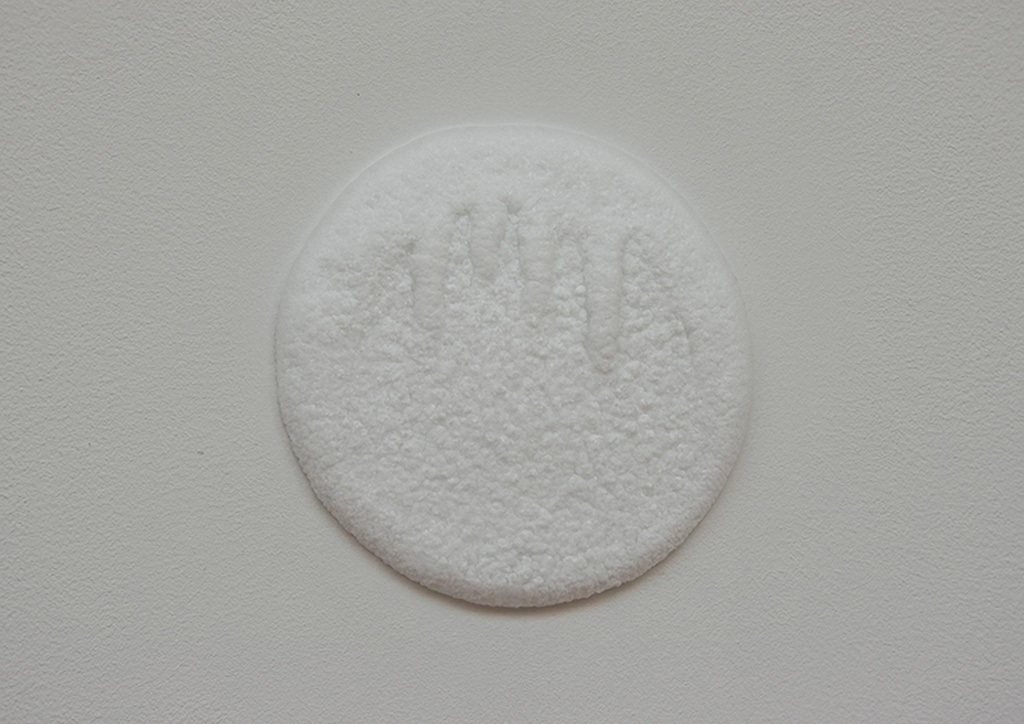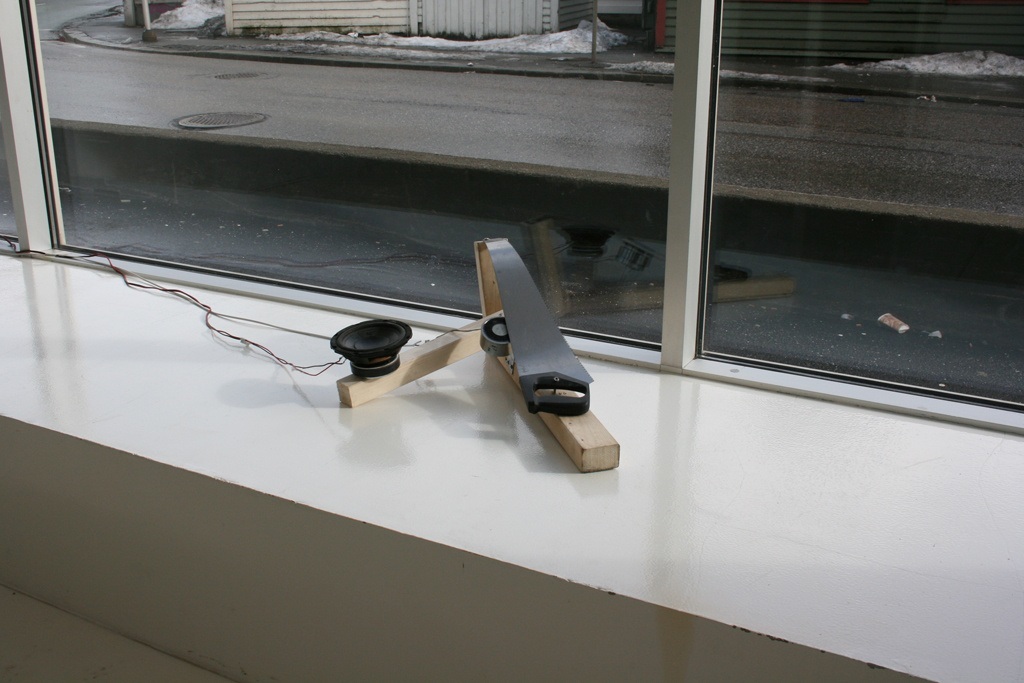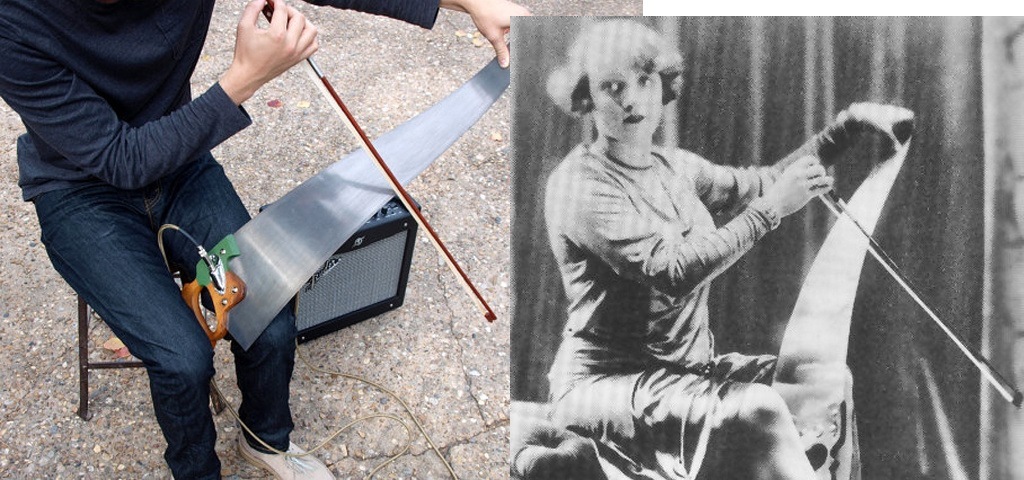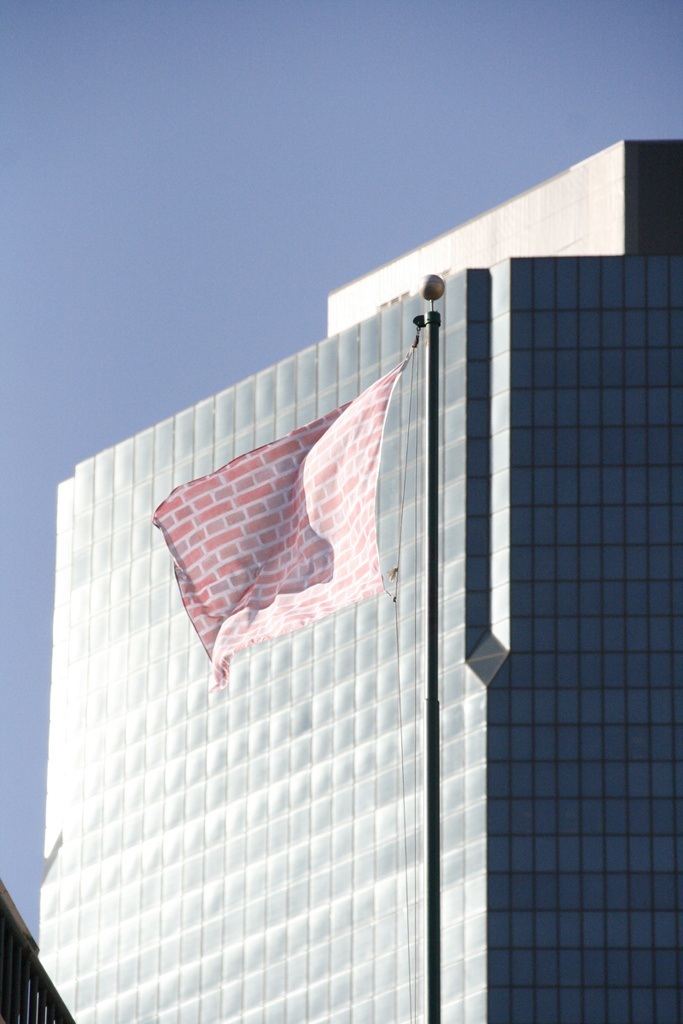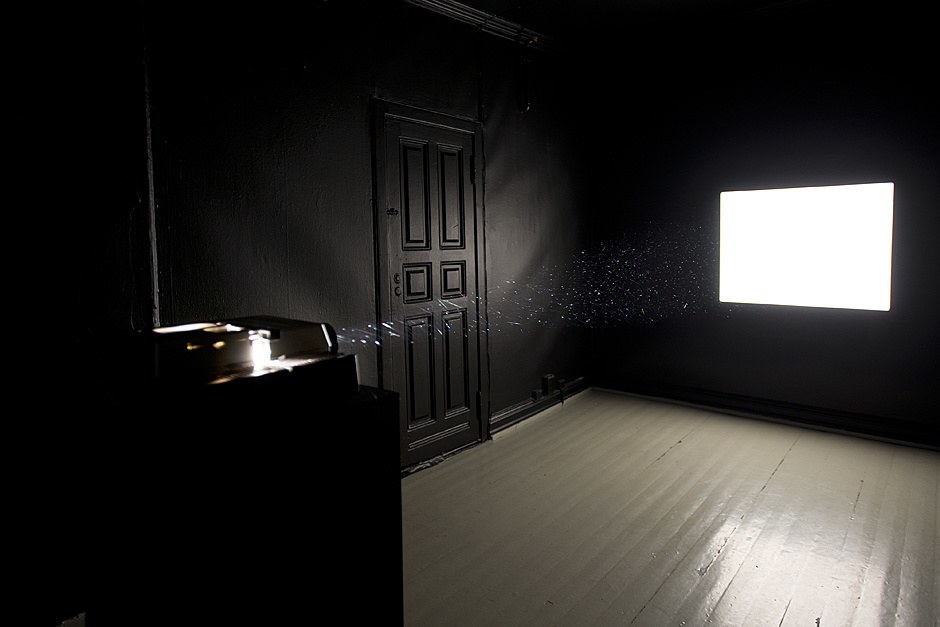I first met artist, sculptor, and machine-deviser Serina Erfjord in a large sculpture hall in the old buildings of the National Academy of Art in Oslo in 2008. She was leaning over a wide table set with various machine parts, a load-iron and cables, working meticulously with great explorative force. The destabilisation of familiar materials by kinetic elements is a main feature in her oeuvre. She hails from the village Erfjord near Stavanger, and her work has been shown at UKS, Oslo; Five thousand generations of birds, Fitjar; Electrohype at Malmö Konsthall, Sweden; and Performa 13, New York. She is currently exhibiting work at the Drawing Biennial in Oslo. The following text links her currently exhibited piece to her previous practice through reflections on materiality.
As I enter the dark room I’m drawn towards the light coming from a projector standing on a carefully measured pedestal. It is projecting a light beam that shapes a white square on the wall. The rest of the walls in the room are dusky and subdued. Is it dust flying there in the light? At the Drawing Biennial, which opened in Oslo on October 10th, 2014 and showcases works like Erased de Kooning Drawing by Robert Rauschenberg, among others, Serina Erfjord displays the second instalment of her work Among Stars. Here, she draws the viewer’s attention away from the bright square, the walls and the machine, and towards what goes on in between them. In the light of the beam hundreds, if not thousands, of shiny silver particles float and sparkle in the air. The ambient noise of the projector subtly covers the sound of the fan placed in a black painted cup, mounted in the ceiling. This is also the origin of the silver pigment, dispersed into the air at a constant speed.
The accompanying text in the Drawing Biennial’s catalogue suggests that the silver bits are the dissolved particles of the photographic image gone missing from the white square. To me this seems like an old-media perspective. Seen in the context of Erfjord’s other work, the simplicity of the atmospheric effect, the relaying of an experienced moment, and the generic feel of the star-fall, shift the focus to the artist’s act of rearranging materials for a purpose not intended by their normative functions.
Let me take you into the context of Erfjord’s previous pieces. Sparkle, a version of which was displayed at Hove-festivalen 2014 and Wire in Denmark this year, reminds me of Among Stars. [1] Sparkle also contains flashes that catch the eye, but along with them come far more danger and tension. In this work, a detached cable stretches up from the floor, emitting sparks, flashes and hisses. This effect is created by a piezo-igniter that releases electricity in sharp bursts. Piezoelectricity functions when an electric charge accumulates in certain solid materials (crystals, particular ceramics, bone, and in various proteins; the crystal-structure conditions the effect) in response to applied mechanical stress. [2] Where Among Stars creates and shares an atmosphere, Sparkle is an isolated life system. Its life-like features rise from a process of energy movement, ongoing in every phenomenon categorised as living; with movement, rhythm, pulse, and change. In both artworks there is a separation between what you see and what is actually there. They call for an opening of the moment, of movement, of the mind in the viewer’s process of understanding. Erford’s works exist in the space between mystery and the revelation of the natural forces at work. When I asked Erfjord for personally important artistic references, she mentioned Tatiana Trouvé. In her exhibition I Tempi Doppi (Double Times), 350 wires are stretched tautly from ceiling to floor at an angle, the shaped metal point down towards the floor, the tip just inches above the surface. The active force, even if invisible, is not mysterious – it is magnetism. [3] The points consist of measuring weights, dreidels and something looking like cartridges. By separating elements of objects from their recognized function—here, the metallic component of the objects and their subservience to magnetism override our associations with their common use—the artist makes the materials once again plain and visible. No longer hidden in a system of utility, they are released from the status of only meaning one thing: Use. There is a list of materials in Erfjord’s work that spring to my mind upon seeing Trouvé’s work: piezo, peltier elements, magnets, sound frequencies, and cogwheels to name only a few.
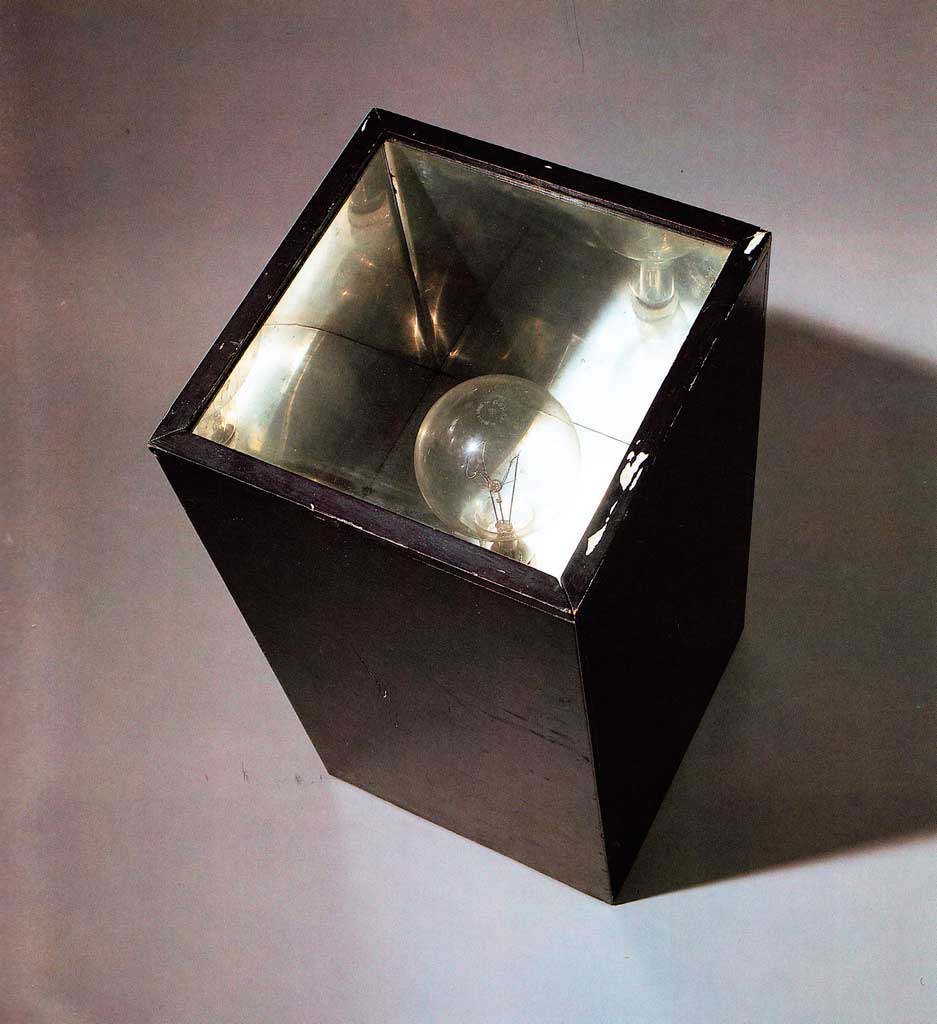
Erfjord is in control of her means of production; she herself builds the motor-gadgets that run her pieces. In an environment of ever increasing specialization this is by no means a given. How many of the general population are able to read the language of a programmer’s code? In a work like Concert to Life (one tone by woman and saw), the mechanisms are exposed, leaving little of the wiring to the imagination. Regardless, the work opens a probing curiosity within me.
A confession: this artwork I have not seen live, only through documentation. Concert to Life (one tone by woman and saw), (2010—2013) [4] is placed in plain view on a broad, low windowsill. It consists of a conglomerate of standard materials, measuring a little bit less than one metre in all directions. Three short wooden battens set the main framework. A saw is pressed from the highest to the lowest point of the support structure, vibrating against an electromagnet, thereby creating the “singing effect” of the thin metal blade. On a parallel batten a dismantled loudspeaker plays back the voice of a woman trying to hold one tone over a set duration of time, failing, trying, searching for the tune. The cables are trailing out of the frame, in plain view. The sculpture is built without veiling the mechanics that make it work; you see its guts, so to say, and still it is eerily captivating.
This kindles the following fragmented line of thought in me: Someone made the tool, someone set up this structure of comparison. There is a presence of the human in the absence, and a kind of loneliness to our tools when we are gone, the saw searching for the human voice. This pushed my thoughts towards die Sprech-Machine of Wolfgang Kempelen:
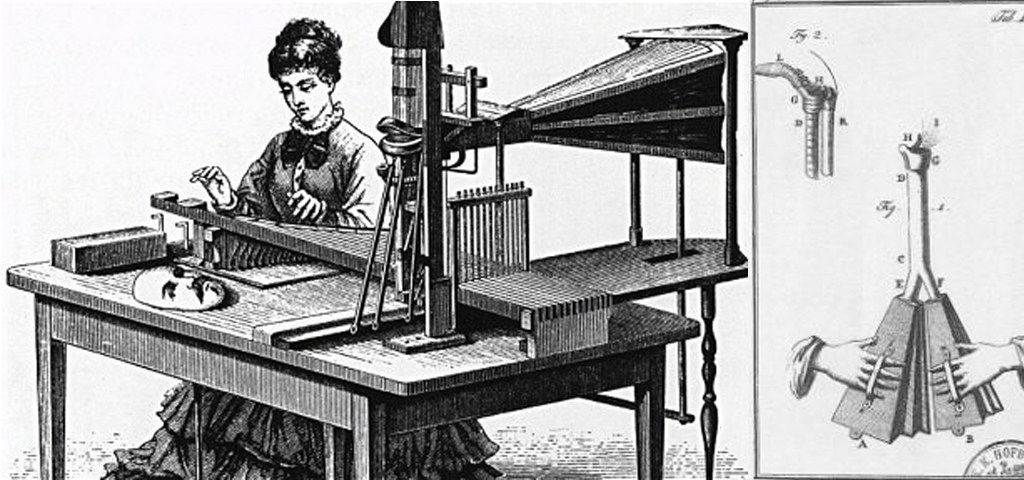
“The Royal Academy in St. Petersburg issued a prize assignment in 1780: to construct a machine which could reproduce the vowels, and explain their physical properties. Many people tried their hand at this strenuous task, among them [Wolfgang] Kempelen, who constructed die Sprech-Machine (still to be seen today in the Deutsches Museum in Munich, and still in working order). The machine was composed of a wooden box which was connected on one side to bellows (rather like bagpipes) which served as “lungs”, and on the other to a rubber funnel which served as “mouth”, and had to be modified by hand while “speaking.” In the box there was a series of valves and ventricles which had to be operated by hand, and with some exercise one could produce outstanding effects. As one witness put it in 1784: “You cannot believe, my dear friend, how we were all seized by a magic feeling when we first heard the human voice and human speech which apparently didn’t come from a human mouth”.” (Mladen, Dolar, A Voice and Nothing More, 2006, p.7).
By so explicitly revealing the mechanisms that create the astounding, sublime feeling of being surrounded by stars [5], based in elements manipulated and accessed, Erfjord in part displays the trick, in part locates and opens up an entry into the feeling of a shared moment with mechanical functions. I’m reminded of the wall mounted, circular work Cold Stain. Here a peltier element (a thermo-electrical gadget) accumulates humidity from the surroundings, growing and changing its form by turning the aggregate of H2O from gas to concrete ice. As in the above, a communication occurs with the unnoticed rhythm and lyrical qualities of our environment.
An austere economy of information sharing can be a very authoritarian gesture. In Erfjord’s pieces I find logic in the sharing and extension of the time-span of the moment of discovery. It is the sensation of the wow she sneaks from you. The wow rises in part from the intriguing divulgement of the material presence, what is actually there in the air. Erfjord pushes the ribs of the phenomena to the front. This is how it happens. This is how the phenomena form.
Footnotes:
(1): Exhibition history: Avgangsutstillingen Kunstakademiet BA. Stenersen Museum, Oslo (2008); Electrohype 2008, Malmö Konsthall (2008); Young & Sound, Ciant Gallery, Prague (2009); Possessions, UKS, Oslo (2013); WIRE, Køge Kyst, Denmark (2014); Connecting Sound Etc, Freiraum quartier21, Vienna (2014)
(2): Piezein is Greek for “to squeeze”. The mineral quartz is mostly used in the lighters. One can say: literally squeezing life out of the rock.
(3): 350 Points Towards Infinity, 2013, Tatiana Trouvé.
(4): Exhibition history: Repeat at Entree in Bergen 2010; Arcadia at Rogaland Kunstsenter 2011; The Limits of My Language Means the Limits of My World at Platform Stockholm 2013.
(5): In the image of being among stars I see a connection going back to a much quoted paragraph from Kant on the moral condition of human beings, as laid out in the following words: the starry sky above me, the infinite thin surface of the earth below me, the moral code within me. The awe of this triangle. (Quoted from memory, Critique of Pure Practical Reason).
This could open up a far darker way of seeing Among Stars – as displaying a mock set up and no moral condition existing for human beings. This approach however, I find to be relying too heavily on the depressed and out-dated view of nature as being purely mechanic, empty of feeling and pursuit. Another point is the general lack of training for many to perceive and get involved in new media art. However, Erfjord manages to be evocative enough to connect with the masses, still accomplishes the feat to not be reductive.
Links:
